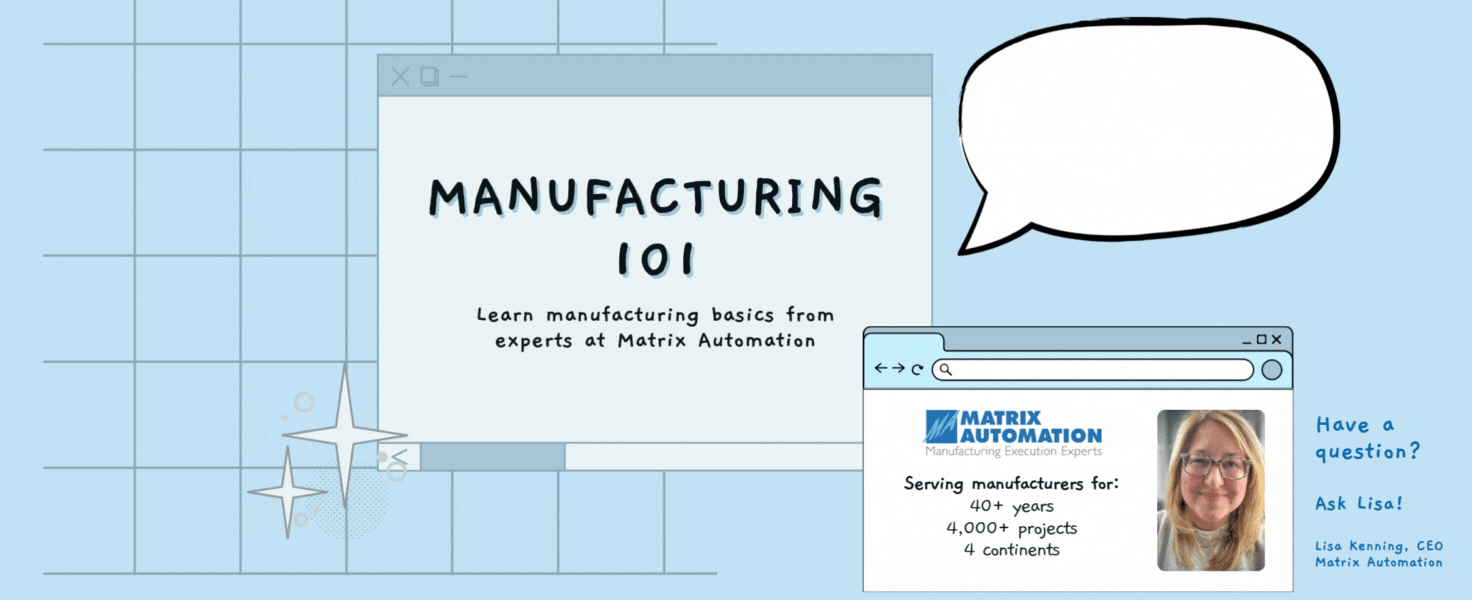A 10-Step Guide for Manufacturers: How to Digitize Work Instructions
Digitizing work instructions is a transformative step for manufacturers aiming to enhance efficiency, streamline processes, and adapt to modern technological advancements. Digital work instructions not only improve accuracy and consistency but also facilitate real-time updates and better communication across teams.
Here is a step-by-step guide on how manufacturers can achieve digital work instructions. And remember – always start small with a pilot and then scale.
Have a Manufacturing 101 question for Matrix Automation experts or want to chat? CEO Lisa Kenning grew up in manufacturing and automation, and loves hearing from other people in the industry. Connect with Lisa on LinkedIn!
Step 1: Evaluate Current Work Instructions
Before transitioning to digital work instructions, it’s essential to evaluate your current documentation. Identify the formats being used, whether they are paper-based, PDFs, or other digital formats. Assess the content’s accuracy, completeness, and relevance. This evaluation will help you understand the scope of the project and determine the necessary updates or revisions. See our blog on Smarter Assembly Manufacturing to understand the benefits of digital work instructions vs traditional methods.
Step 2: Choose the Right Digital Platform
Selecting the right digital platform and solution provider is crucial for the successful implementation of digital work instructions. Look for a proven platform and experienced solution provider – such as Matrix Automation and our ProductionWare® platform – that offer features such as ease of use, scalability, flexibility, and reliability. Furthermore, ensure the platform can integrate with existing equipment as well as manufacturing and enterprise systems. Note that some providers will claim to integrate with systems such as automotive broadcast; Matrix recommends that you get proof.
Step 3: Standardize Content
Consistency is key when digitizing work instructions. Standardize the content format, terminology, user interface, and user experience to ensure clarity and uniformity across all instructions. Define templates that outline the structure of the instructions, including headings, subheadings, step-by-step procedures, and safety notes – as well as screen templates.
Standardization helps manufacturers maintain coherence, makes updates easier, and simplifies operator training.
Step 4: Digitize Existing Instructions
Convert your existing work instructions into the chosen digital format. This process may involve scanning paper documents, reformatting PDFs, or rewriting instructions to fit the new templates. Utilize digital tools from your solution provider for efficient digitization.
Step 5: Add Multimedia and Manual Data Entry
Enhance your digital work instructions by adding multimedia elements as well as developing forms for manual data entry. Images and diagrams can provide visual clarity and better understanding of complex procedures. Interactive elements for manual data entry, for example, can further enrich the instructions and provide a means to further digitize operations. Make sure these elements are accessible and easy to navigate.
Step 6: Implement Real-Time Updates and Support Continuous Improvement
One of the significant advantages of digital work instructions is the ability to implement real-time updates.
Establish a system for regularly reviewing and updating the content. This could involve setting up a team responsible for content management or having a fast track to respond to continuous improvement requirements. Ensure that updates are communicated promptly to all stakeholders.
Step 7: Train Employees
Effective training is vital for the successful adoption of digital work instructions. Conduct training sessions to familiarize employees with the new platform, navigation, and features. Provide hands-on practice through simulation and encourage feedback to address any challenges or concerns. Continuous training, simulation, and support will help employees adapt smoothly to the new system.
Step 8: Ensure Compliance and Security
Compliance with industry standards and regulations is crucial when digitizing work instructions. Ensure that the digital platform meets all relevant compliance requirements, including data integrity. Implement access controls and encryption to protect sensitive information and maintain the integrity of the instructions.
Step 9: Monitor and Optimize
After implementing digital work instructions, continuously monitor their effectiveness and user engagement. Collect feedback from employees and identify areas for improvement. Use analysis tools to track patterns and performance metrics. Regularly optimize the content and structure based on insights gained from monitoring.
Always remember to engage and empower frontline brilliance; operators are doing the work day to day and can provide invaluable insights.
Step 10: Scale and Expand
Once the initial implementation is successful, scale the digitization process across other departments and operations. Expand the scope of digital work instructions to cover all aspects of manufacturing processes, maintenance procedures, and quality control. Continuous scaling will maximize the benefits and drive overall operational excellence.
Digitizing work instructions is a strategic move that can significantly boost efficiency, accuracy, and collaboration in manufacturing. By following these steps, manufacturers can seamlessly transition from traditional paper-based work processes to dynamic and interactive digital instructions, paving the way for future growth and innovation.
Want to learn more about how digital work instructions can improve your business? See real results in our references booklet. Matrix Automation is ready to help you digitize your manufacturing and level up your results. Contact us today to discover how 40+ years of digital transformation experience makes a difference.


